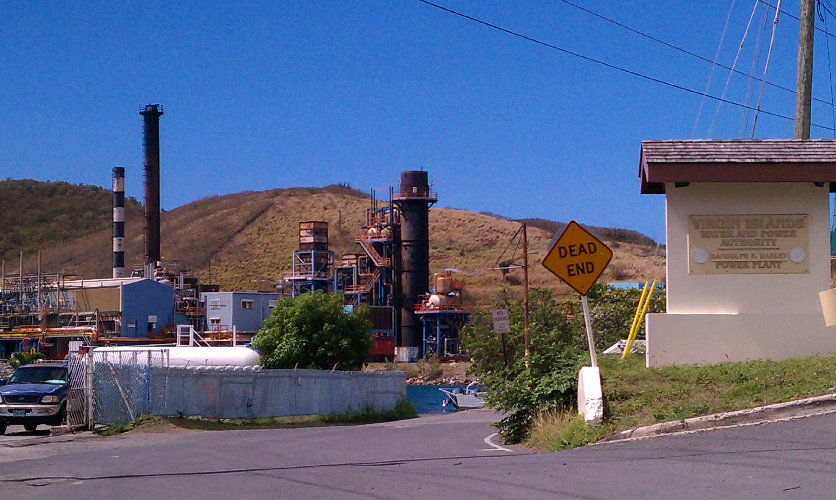March 9, 2012


Hovensa, the U.S. Virgin Islands’ sole oil refinery, was forced to shut down last month due to economic losses, leaving over 2,000 people unemployed. This energy fiasco is devastating the islands’ economy, and showing the vulnerability caused by oil dependency. The people of USVI are in urgent need of a new energy source, and cleaner, greener energy just might factor into the solution.
<![CDATA[
[nggallery id=123 template=carousel images=4][imagebrowser id=123]
By Albert Segovia
March 8, 2012
U.S. VIRGIN ISLANDS- Hovensa, the U.S. Virgin Islands’ sole oil refinery, was forced to shut down last month due to economic losses, leaving over 2,000 people unemployed. This energy fiasco is devastating the islands’ economy, and showing the vulnerability caused by oil dependency.
The once-prominent oil refinery closed February 21, keeping about 100 employees to run the facility as an oil storage terminal. The refinery produced over 90 percent of the petroleum energy for the U.S. Virgin Islands, and accounted for 20 percent of the territory’s GDP. Representatives of Hovensa say losses have totaled over $1.3 billion in the last three years. This, along with decline in demand for refined products, makes it economically unfeasible to keep Hovensa operating.
The average household in the VI uses approximately 500 kWh/month in electricity, which is almost half of what the average stateside household uses. Perhaps it’s the 47 cents per kilowatt hour charge the Virgin Island residents see at the end of the month. Still, energy conserving or not, the people of USVI are in urgent need of a new energy source.
And that just might mean increasing energy efficiency and green energy. USVI Governor John P. de Jongh, Jr. and the National Research Energy Laboratory (NREL) set out to reduce fossil fuel use on the islands by 60 percent by 2025 (USVI Renewable Energy Roadmap report offers graphs and statistics). The recipe includes biomass (2%), landfill gas (3%), solar (3%), and waste-to-energy (8%). The majority of this reduction will be accomplished by energy efficiency (38%).
The second major source, wind (27%), has been discussed since 2006, but negotiations fell short due to fear of hurricane damage. Five years later, the VI hopes to get more than a quarter of its energy from wind power, and has become a site of interest to many business investors. NREL explains, “27 different companies submitted proposals, and six finalists are hoping to be chosen to build a 10-megawatt or more photovoltaic system by late 2013.” Although the road map is already established, other investors continue to come forward with different ideas.
Siemens Energy Inc. created a proposal for a transmission project that connects the energy systems of the islands of Puerto Rico and the USVI, and presented it to Virgin Islands Water And Power Authority (WAPA). It would consist of three connections, providing more than 200 kw of energy. By expanding the size of the energy market, the interconnected grid between the territories would provide cheaper and more reliable energy. The executive summary provided by Siemens Energy Inc. provides feasible options which have been tested.
Another major player in this debate is Alpine Energy, and their efforts to convert waste to energy. Proposals and negotiations between Alpine Energy and VI have been ongoing since 2008, but continue to be delayed due to fear of air contamination. Alpine believes it can produce vasts amounts of cheaper energy by burning petroleum coke, a byproduct of oil refineries that can be used for carbon energy. Many fear burning petroleum coke would harm the environment. However, the power generation project is also capable of using other alternative fuels such as energy crops, tire-derived fuel, and rum bottoms. As the roadmap suggests, NREL is expecting the third largest portion of the pie to come from converting waste to energy. Alpine Energy’s website lists a 16.5 MW waste-to-energy power generating facility on St. Croix as one of their projects under development.
The VI’s energy dilemma provides a prime example of the downfalls of oil dependency. Renewable sources of energy have been proposed for years, but failed to reach the forefront until urgency struck. Furthermore, renewable sources of energy offer long term paybacks. At the moment, few photovoltaics exist and wind farms have yet to be constructed. NREL and Governor de Jongh expect more efficiency in energy use, taking into consideration the average VI household uses about half of what the average state side household uses, these efficiencies will have to be met through infrastructure.
© 2012 SCGH, LLC.
]]>